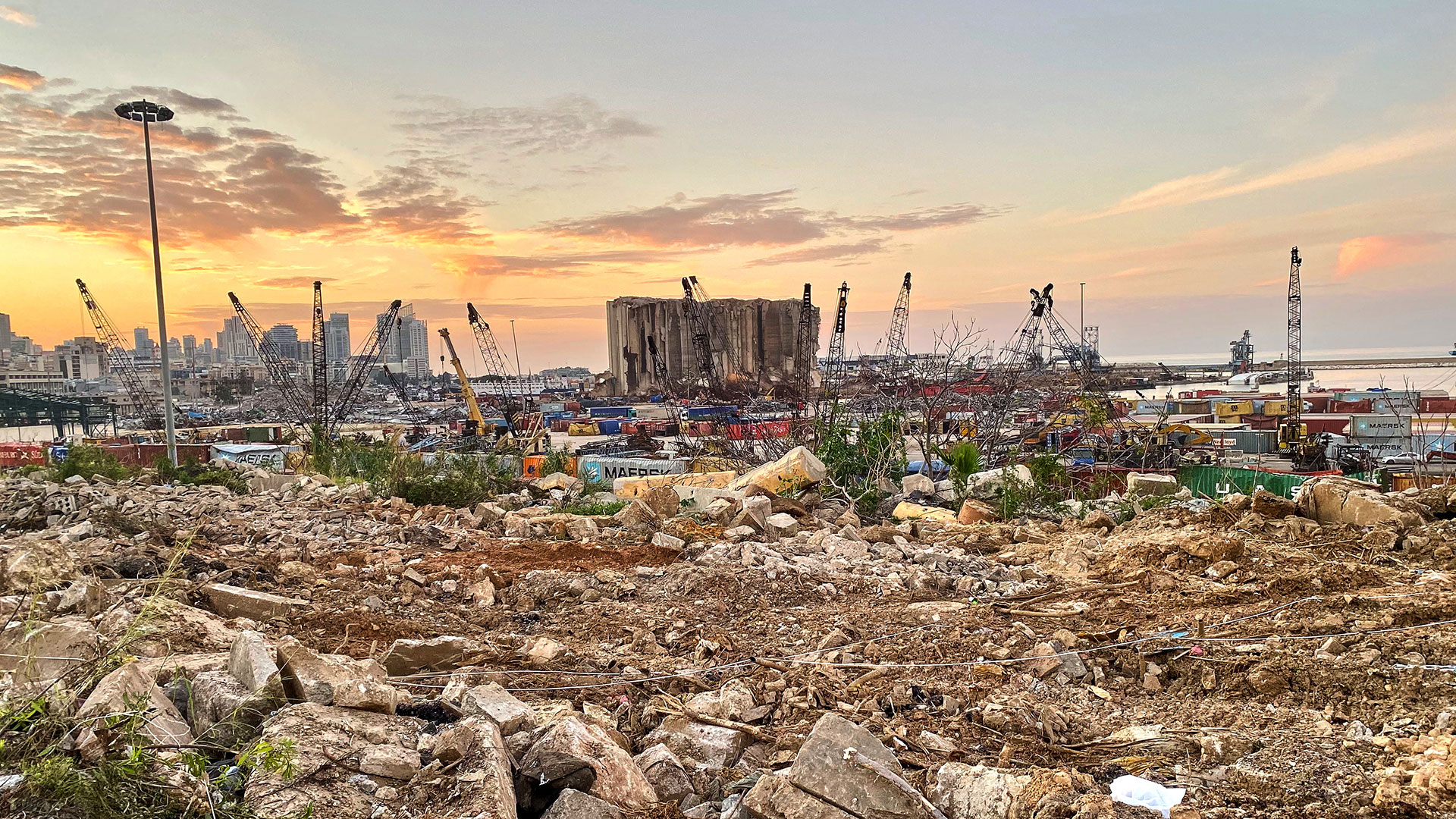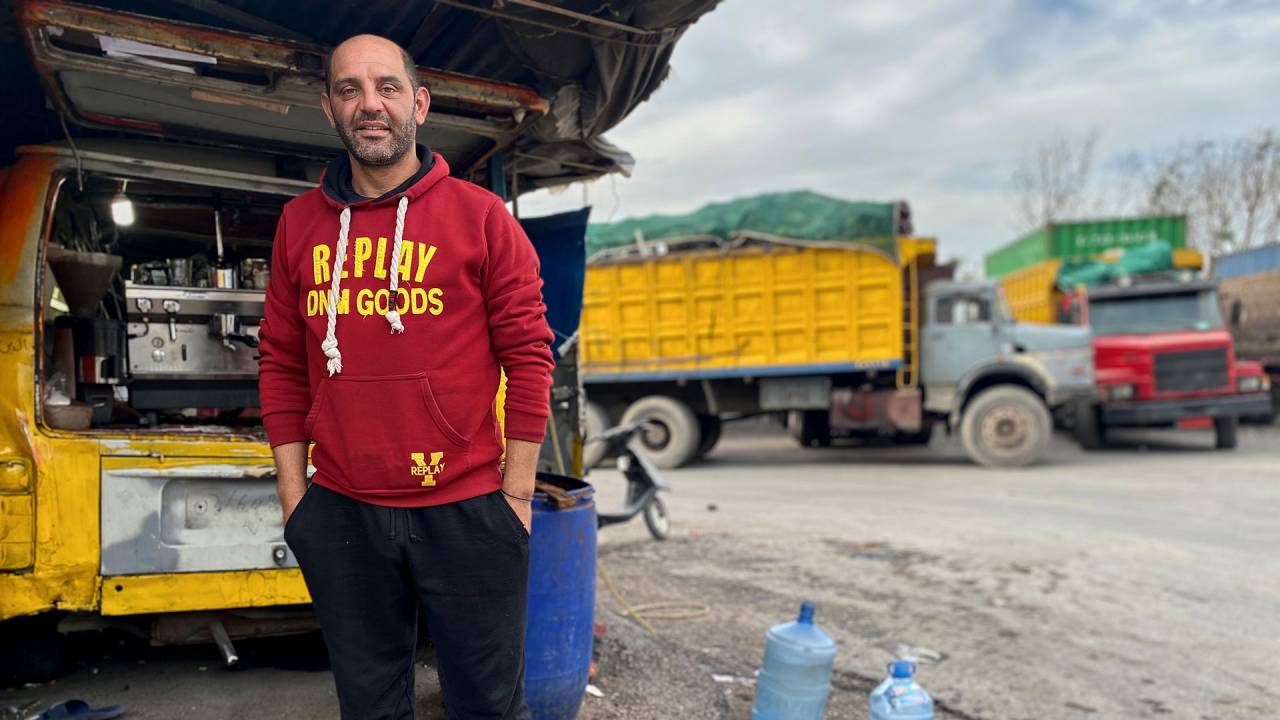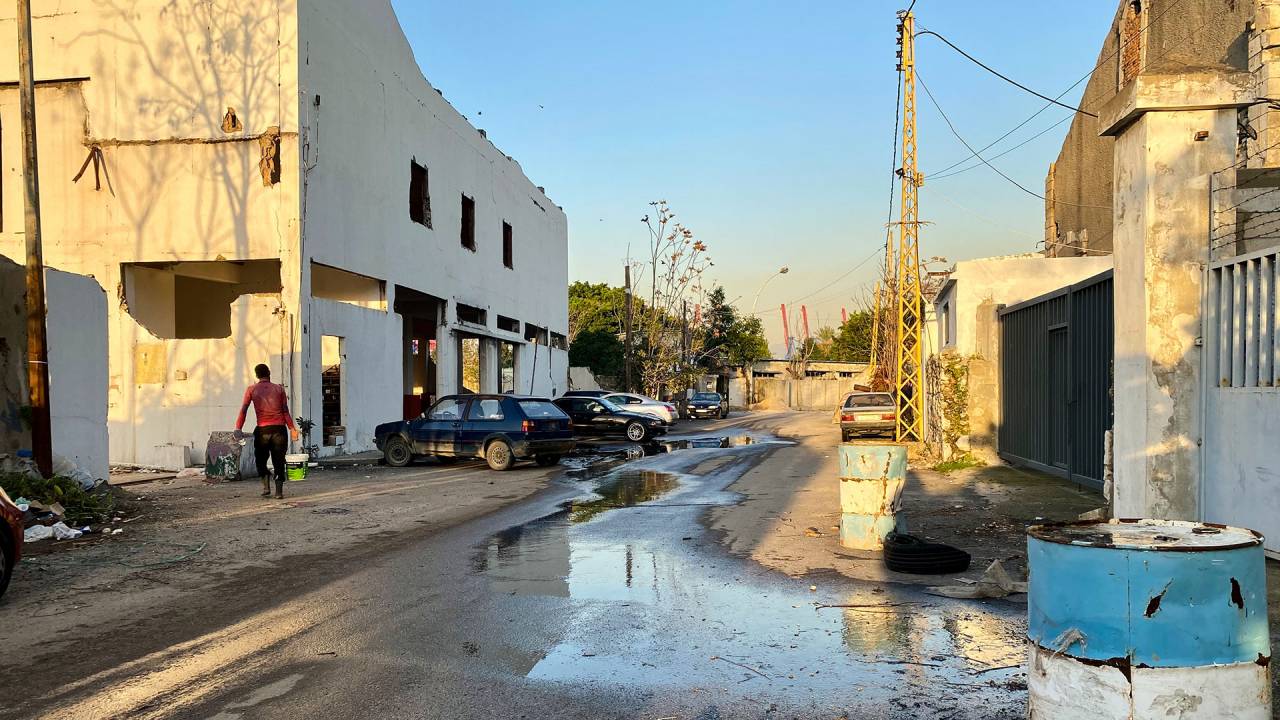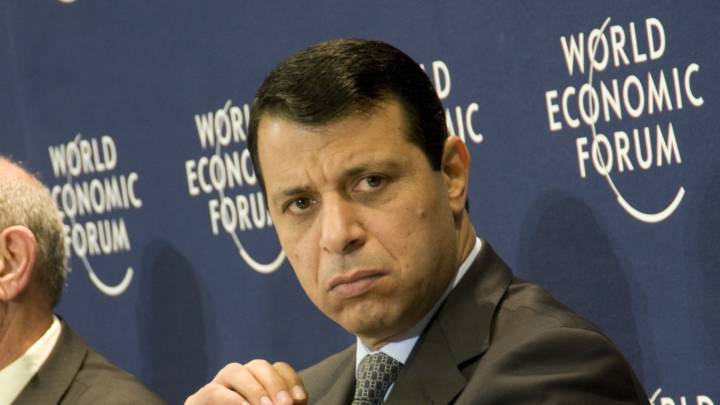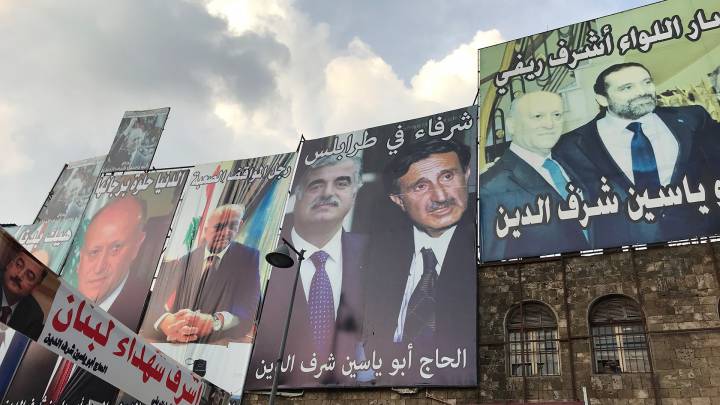Six months after the Beirut blast, much has been rebuilt in one of the city’s worst damaged neighborhoods, but hope is still in short supply.
Twenty-eight-year-old Muhannad al-Husayn surveys the perimeter of a cold and mostly bare shipping container in which he, his wife Ruqqaya, and his two-year-old child Omar live. He speaks soberly about his journey and how he came to Beirut’s Karantina neighborhood from Syria in 2007, before the civil war, in order to get a job alongside his brother at the port. He is counting the years he spent depositing wheat in the nearby silos and the dreams he used to harbor, but none of that seems to matter now.
“I used to live better,” he tells me, his gaze affixed upon his son, the incessant rumble of commercial trucks in tow. “Now, I’m just surviving.”
The soon-to-be family of four is not only facing an ever-worsening economic crisis paired with a pandemic that will surely not be overcome this year in Lebanon, but has to cope with the aftermath of a traumatizing event that wrought havoc on his entire neighborhood, and life.
The chances are high that, if you do not live in the Middle East, you have never heard of the neighborhood in which Muhannad resides, which is now the site directly adjacent to one the largest non-nuclear explosions in global history. On August 4th 2020, 2,750 tons of ammonium nitrate stored at the Beirut port exploded causing at least 204 deaths, leaving thousands injured, and an estimated 300,000 inhabitants of the Lebanese capital homeless.
In Karantina alone, a low-income area hemmed in by harbor, motorway, and landfill that spans a mere 0.8 square kilometres, 357 buildings were damaged and eight people lost their lives. It’s surviving working-class residents now have to contend with many ramifications.
Muhannad is in a particularly vulnerable position. His salary as a security guard has stayed at 125,000 LL a week for a decade, even as the Lebanese Lira has lost nearly 80 percent of its value over the course of the last year. His actual income has thus shrunk to an extremely meagre 15 Dollars a week. He had to sell his possessions, already scant before the blast, among them winter carpets and clothes, in order to pay for the repairing work on his family’s home. Several NGOs, he says, insisted they would help only to (purportedly) disappear from the neighborhood. And with the family’s hot water generating boiler tank destroyed in the blast and no alternative in sight, they have been left to fetch water from nearby friends.
“I don’t think the situation in Karantina will improve,” says his wife Ruqqaya, one child in her lap and another on the way. “It was only last week, four months after the explosion, that they even began to clear the rubble in front of our house.”
While the immediate parameter of the family’s house was still littered with detritus, much has been restored and rebuilt in the streets beyond. Among the local NGOs involved in the effort is Offre Joie (French for “the joy of giving”). This organisation is rehabilitating 52 buildings and houses and 39 shops and small businesses in Karantina and Mar Mikhael. Though houses are restored, the economic and social situation remains unchanged, and is getting worse.
Deriving its name from the French “quarantaine” and its former function as an Ottoman-era quarantine built in the 1830s to prevent the spread of foreign diseases, Karantina points to populations of various origins that resided here in the span of the last centuries.
“In a way, Karantina is a microcosm of Lebanon as well as the terrain where regional conflicts become visible,” says Diala Lteif, a PhD candidate in Urban Planning at the University of Toronto whose work is devoted to the urban history of Karantina.
In the wake of the Armenian Genocide and the Nakba (the 1948 eviction or flight from the territory of newly-founded Israel), it was a destination for Armenians and Palestinians seeking refuge. During Lebanon’s 15-year civil war, it became the site of one of the war’s deadliest massacres.
After 2011, Karantina has become home to many Syrian refugees. And on August 4th of last year, it was one of the areas that were hit first and worst by the Infijar (Arabic term for explosion). So, what is the state of Karantina now?
One would be hard-pressed to find anyone claiming that Karantina was a refuge in the shielding, safe-harbour-sense of the word. Some call it the “misery belt.” Others, a “development destination” or an “investment opportunity.” Currently, the urban peninsula is home to 693 households, 71 percent of which are Lebanese. And caught between the dire economic situation and rapacious real-estate developers who think in long-term opportunities, the neighborhood is under threat.
“Karantina has been intentionally neglected over the years to drive the people out because of its strategic location,” says Jennah Haidar, an architect, urban researcher, and volunteer who works at Public Works, a research and design studio.
Karantina’s proximity to the port means it is in many ways economically attached to the city’s most vigorous industrial infrastructure. This is one of the principal reasons that its residents initially flocked to it and continue to do so. After the government built a wall around it though, sometime around the mid-20th century, Karantina began its slow demise.
“The landlords have no incentive to renovate their own houses because they prefer the big companies to pay them a lot of money when they want to buy out the area to, for instance, create another high-rise seafront space.
In a recent spatial analysis charting the status of Beirut’s damage recovery, Rice University’s Center for Research Computing derived data provided by Beirut Forward Emergency Room (a conglomerate of entities focused on restoration and rehabilitation) indicating that out of Karantina's 357 damaged buildings, 155 are undergoing repairs. So while much work remains to be done, a substantial transformation to a more liveable space seems out of reach. Karantina’s inhabitants don’t have their hopes up high.
40-year old Firas Allau is one of these inhabitants. Born in Baalbek in Lebanon’s Beqaa valley, he has been working in the port’s security sector and living on Karantina’s edge for nearly two decades.
“The area has been built on no foundation,” he says referring to years of governmental neglect while pouring cups of Nescafé for the truck drivers in his open air home-cum-work-outpost made of corrugated metal sheets and tarp. Though his wife and two sons live in a home in the West Beirut neighborhood of Khalde, a grueling schedule renders it impossible for him to join them, save for those few hours he’s able to steal between shifts.
“There is no future here in Karantina,” he says, grimacing. “But what can I do? We have many expenses and there is no time to look for other work.”
This is a common refrain amongst the inhabitants. Firas, for instance, tells me that if he could expand his imagination, he would go to the mountains and work in the field. But so much of what he knows, at this point, remains within the micro-society that is Karantina. Imagination, as well, is an increasingly challenging (and costly) faculty to access in the midst of such socio-political turmoil.
“Imagining the future is a luxury,” says urban historian Diala Lteif. “It’s a luxury you can afford when you have privilege. But when you come from a history of displacement, of marginalization, of clear outright structural systematic dispossession against you, it is very difficult to do so.”
Difficult, but not impossible. The inhabitants of Karantina still have dreams. But theirs are ones that arise from need rather than whimsy.
When I ask Muhannad about the future of Karantina, of the state, of his family, he responds in no uncertain terms. “I don’t want to stay here to see it,” he says, fingering at the makeshift heating device he made with electric coils and cables. “I’m focused solely on emigrating. Anywhere out of the Middle East. It doesn’t matter. I don’t know how I’ll do it, but God willing, I will.”
Angela Brussel is a writer and photographer based in Beirut whose nonfiction and fiction have appeared in Literary Hub, New Statesman, Catapult, The Awl, Nylon Magazine, Electric Literature, and The Wrong Quarterly.

